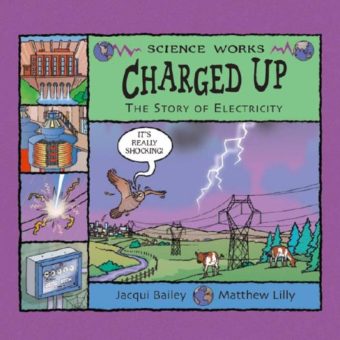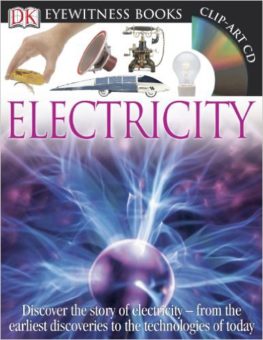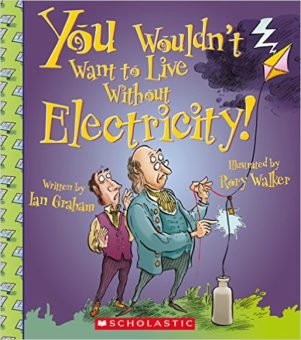NGSS Ideas
Three Books that Teach Kids about Electricity
If you are looking for books that can teach kids about electricity, here are four that are sure to work. They are all written in a manner that will engage your child or class in the history and science of electricity. Take a look:
Charged Up: The Story of Electricity
by Jacqui Bailey

Some kids learn better when the information is given in the form of a story. If your child fits this learning mode, then they are sure to get a lot out of this book. The book is a story about a thunder storm that hits a town and what happens when the power goes out. Inside of the story, the author discusses topics like current and static electricity. It also examines how the energy of falling water is used to make power in the form of hydroelectricity, and how we fix power outages. It’s all done in cartoon form with text appropriate to grades 3-6.
DK Eyewitness Books: Electricity
by Steve Parker

This book is part of the well-reviewed and trusted DK Eyewitness series. It uses a timeline to highlight the important observations and pivotal players in the development of the science of electricity. Each facet of research is discussed in a general manner that gets the point across without going too far into the scientific theory. Overall, it provides a lot of good jumping off points for further study. The text is backed up with lots of great pictures of the scientists along with their inventions. There is also lots of information about how electricity figures into our everyday lives. The book comes with a CD ROM of clipart. The layout and language level of this book make it more appropriate for grades 4-8.
You wouldn’t Want to Live Without Electricity!
By Ian Graham

The “You Wouldn’t Want to” series are all fun books that give kids some perspective on how lucky they are compared to people like medieval knights, Greek athletes, or Civil War soldiers. The “You Wouldn’t Want to Live Without” series tries to put the same spin on understanding some of the things we are accustomed to having but may not appreciate, like toilets, insects, and in this case, electricity. The book uses a timeline format to present lots of examples of how, starting over two thousand years ago, people have made their lives a little easier by using electricity taking observations they have made about some aspect of the science of electricity. It talks about light and heat, motors and movement, and pollution and conservation. The format is comic book style with text directed toward grades 3-6.
